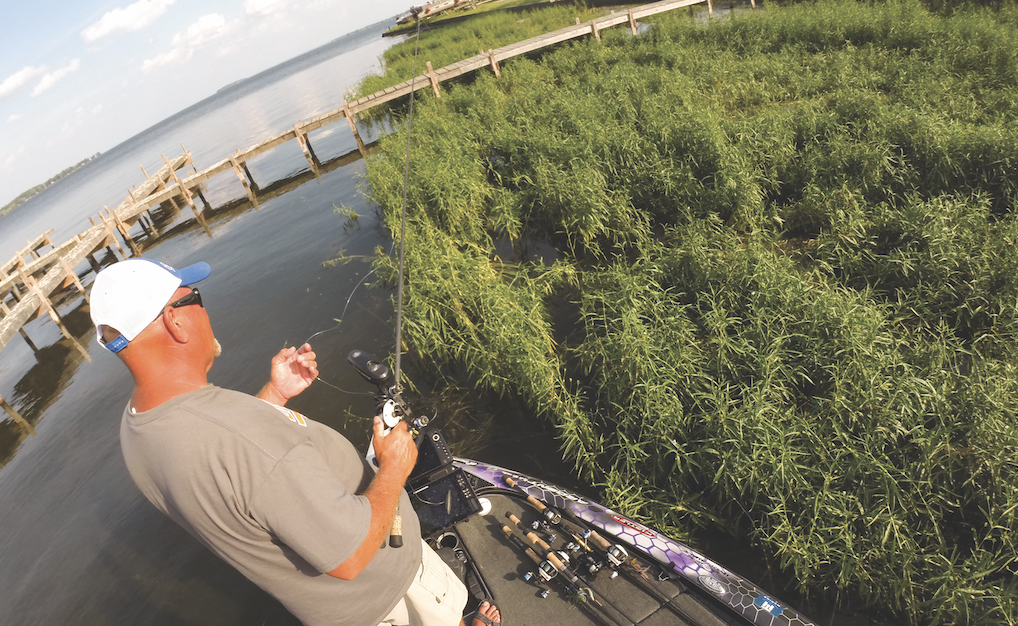
Bassmaster Elite Series pro Matt Herren of Alabama puts on a happy face whenever he clutches one of his beloved flipping rods. If he is about to use the rod to pitch a jig or a Texas-rigged creature bait into a water willow patch, he grins like a Cheshire Cat. That mischievous grin was plainly evident when I stepped aboard Herren’s bass boat at New York’s Oneida Lake. It was late summer and the fishing was slow, which is typical across the country that time of year. Several of the nation’s other top bass pros were also fishing the lake. They were catching bass, but the bites were few and far between.
Herren, however, was consistently boating bass, including quality largemouth of 4 pounds or more. We sped across the lake and soon pulled up to a stretch of water willow in a quiet pocket off the main lake. Herren had already plucked several bass from the vegetation and was confident there were more to be caught. The lush grass was so dense you couldn’t run a swim jig through it. The outer edge of the patch was rooted in nearly 4 feet of water, which is on the deep side for water willow.
Herren learned how to fish water willow on Alabama’s Coosa River chain of reservoirs and was right at home fishing it at Oneida. He has snatched bass from water willow in much of this aquatic species’ range, from Texas and Oklahoma to the Eastern Seaboard and north to Canada.
When the sun hits the mat, it warms the water. Bass in shivery water cozy they're back against the mat, just as they do under hyacinth mats in Florida, Herren added.
Due to the density of the water willow patch at Oneida, Herren pitched a Reaction Innovations Sweet Beaver, Texas rigged on a 4/0 Hayabusa FFP Straight Heavy Cover Hook with a pegged 3/4-ounce Elite Tungsten flipping weight. He also had another flipping rod on deck rigged with another of his go-to water willow baits, a 3/4-ounce jig dressed with a Sweet Beaver. When fishing sparse water willow, Herren will pitch sinkers and jigs as light as 3/8 ounce. “When water willow is in full bloom or in mats, you need heavier baits to get down through it,” Herren said.





